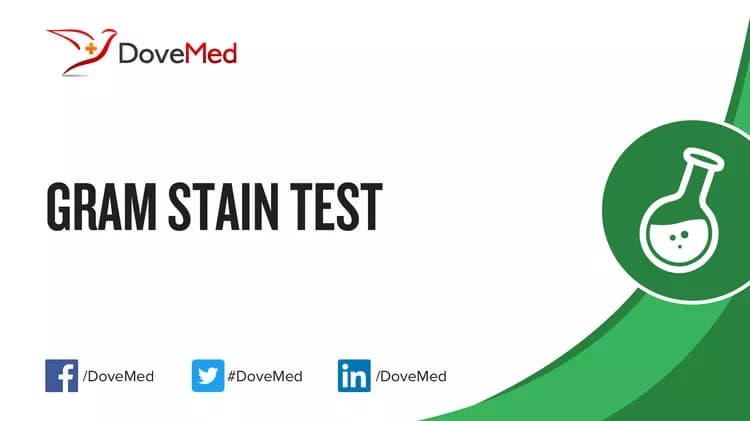What are the other Names for this Test? (Equivalent Terms)
- Gram’s Stain Test
What is Gram Stain Test? (Background Information)
- Gram Stain Test is a dyeing technique that helps in detecting the presence of bacteria or fungi in a fluid/cell sample, obtained from a site of suspected infection
- It also helps in a preliminary classification of the bacteria, which helps a physician initiate appropriate antibiotic therapy, before more ‘time-consuming’ confirmatory test results (such as from a culture) are available
- The specimen obtained from the infection site is smeared onto a slide and allowed to dry. It is then treated with Gram’s staining technique, which involves the sequential use of a crystal violet dye, Gram’s iodine solution, alcohol, and safranin dye
- The slide is then examined under a microscope by lab personnel, to look for the presence of bacteria, fungi, and other cells. If bacteria are present - the color, shape, arrangement, and its location (inside or outside of cells), are noted
What are the Clinical Indications for performing the Gram Stain Test?
- A physician orders a Gram Stain Test, when the possibility of a bacterial (or sometimes fungal) infection is suspected
- A Gram stain may also be carried out on a sample of bacteria, grown in culture
How is the Specimen Collected for Gram Stain Test?
Sample required:
The samples that may be used for Gram stain include:
- Exudate (ooze) or pus from a possible site of infection
- Sputum
- Urine
- Body fluids that may include:
- Peritoneal fluid (from the peritoneal cavity in the abdomen)
- Pleural fluid (present outside of the lungs)
- Cerebrospinal fluid (present outside of the spinal cord)
- Bacterial colonies found to grow in culture
Process:
- Exudate/pus/culture sample may be collected using sterile swabs
- Sputum/urine samples may be collected in sterile containers
- Fluids from body cavities can be drawn through a needle and syringe
Preparation required: None
What is the Significance of the Gram Stain Test Result?
- When no bacteria or fungi are identified under a microscope, following a Gram Stain Test, the result is reported as “no organisms seen”. This may, either be due to insufficient microbes in the sample, or due to an absence of infection
- When organisms are observed under the microscope, the test result will indicate:
- Whether the bacteria is gram positive (purple in color) or gram negative (pink in color)
- The shape of the bacteria - spherical (cocci), or rod-shaped (bacilli)
- The arrangement observed - whether present singly, in pairs, in clusters, or in chains
- Whether organism is present inside the cells (intracellular), or outside of the cells (extracellular)
- Presence of other cells, such as white blood cells
- Presence of fungi, such as yeast (round cells with buds) or molds (appear with many branches, called hyphae)
- The results of a Gram Stain Test are preliminary in nature. They help in initiating antibiotic therapy, until more definitive test results, such as culture or antigen antibody test results are available
The laboratory test results are NOT to be interpreted as results of a "stand-alone" test. The test results have to be interpreted after correlating with suitable clinical findings and additional supplemental tests/information. Your healthcare providers will explain the meaning of your tests results, based on the overall clinical scenario.
Additional and Relevant Useful Information:
- Hans Christian Gram is credited with developing a staining method for distinguishing between two major kinds of bacteria. The Gram’s staining method is named after this Danish bacteriologist
Certain medications that you may be currently taking may influence the outcome of the test. Hence, it is important to inform your healthcare provider, the complete list of medications (including any herbal supplements) you are currently taking. This will help the healthcare provider interpret your test results more accurately and avoid unnecessary chances of a misdiagnosis.
Related Articles
Test Your Knowledge
Asked by users
Related Centers
Related Specialties
Related Physicians
Related Procedures
Related Resources
Join DoveHubs
and connect with fellow professionals


0 Comments
Please log in to post a comment.